 |
| Jimmy Preston - Wild Man of Rock 'n' Roll |
It was a wild and raucous jump blues recorded in May 1949 by Jimmy Preston and his Prestonians. It was covered by Bill Haley and the Saddlemen in 1952, and thus became a milestone in the development of rock and roll. That’s what most fans of R&B and early rock and roll know about “Rock The Joint.” But there’s much more to the story of this record than that short summary.
Our playlist starts with three records which influenced “Rock The Joint.” They were recorded within a few days of each other at three widely separate locations. There’s also the first cover version by a white band, which preceded the Bill Haley version, and that brings us to a whole music and dance scene which was a conduit for white kids picking up on R&B but which is rarely mentioned in histories of rock and roll, at least not the ones I’ve read.
Let us go back to December 1947, a year and a half before Jimmy Preston recorded “Rock The Joint.” With the second American Federation of Musicians recording ban due to start on the first of January 1948, the final weeks of 1947 saw frantic recording activity by diskeries all across the U.S. of A. On December 18th, in Detroit, the Wild Bill Moore Sextette laid down the primitive honker “We’re Gonna Rock” for Savoy Records. Underpinned by the boogie piano of T.J. Fowler, beefy baritone sax blasts from Paul Williams, and a band chant of “We’re gonna rock, we’re gonna roll,” Wild Bill’s down in the alley tenor sax growled and squealed high, wide and handsome over the whole glorious shootin’ match.
On December 23rd, in Los Angeles, the little known Nelson Alexander Trio recorded “Rock That Voot” for Specialty Records. They were a standard piano, guitar and bass group of the kind which became popular in the wake of the success of the King Cole Trio. This driving little number is structurally close to “Rock the Joint,” although in spirit it remains closer to the jive groups of the late 1930s and early 1940s with its unison vocal chorus of “I wanna rock that voot, baby all night long!” The lyrics are racy, to say the least, as it’s pretty clear that the singer’s intense desire to “rock that voot” can mean only one thing, and it doesn’t involve listening to a Slim Gaillard record. The Trio’s members were Edgar Rice (guitar), William Regan (bass) and Nelson Alexander (piano).
 |
| Dig those ties! The Nelson Alexander Trio |
Wynonie’s “Good Rockin’ Tonight” was a cover of the more sedate original version by the composer of the song, Roy Brown. The Harris version had a squawking sax solo by Hal Singer and a heavier beat reinforced by gospel style handclapping, a feature which would also be used by Jimmy Preston on “Rock The Joint.” The lyrics included mention of the more temporal interests of Deacon Jones and Elder Brown whose boozy misadventures had been the subject of Wynonie’s first hit “Who Threw The Whiskey In The Well,” a few years back.
Of those three “rockers” recorded in the dying days of 1947, it was “Good Rockin’ Tonight” which was released first, in February 1948. It was easily the most successful of the three records, reaching number one in the R&B chart. “Rock That Voot” was the next to be released, in April 1948, but the record buying public remained indifferent to its charms. Wild Bill Moore’s “We’re Gonna Rock” was released in June 1948 (on Savoy 666 – proof that the Devil was at work), climbing to number 14 in the R&B charts.
 |
| Billboard, June 1948 |
 |
| From the same edition of Billboard - Nelson Alexander not getting much of a push from his label |
 |
| Still June, 1948 - Mr Blues rules race retail sales chart |
We now find ourselves in a recording studio in Philadelphia in May 1949, where jump band leader, alto sax man, and vocalist Jimmy Preston is about to record “Rock The Joint” for Gotham Records. Preston was born in Chester, Pennsylvania, and grew up in Philadelphia. His band, the Prestonians, had started recording for Gotham in 1948.
At their second session for the label in early 1949, the band had recorded “Hucklebuck Daddy,” a fast and rowdy jump blues with shouted band vocals, moronically honking sax and a subtle chorus of “She said: ride, Jimmy, ride!” In this opus “Hucklebuck” was very plainly not a dance, but something much more intimate and energetic. By the end of April the record had reached number 6 in the Billboard Race Record chart but by early May it had already fallen back to number 13.
A follow up in the same vein was obviously called for and Gotham A&R man Doc Bagby brought along “Rock The Joint,” a song he had co-written with his band assistant Wendell Keane and his band singer Harry Crafton. He also brought along instrumental reinforcement in the shape of tenor sax player Danny Turner.
The resulting performance was even more frantic than “Hucklebuck Daddy,” but without the single entendre lyrics. “Rock the Joint” was a clarion call to have a whale of a time with its pounding beat, squealing saxophones and drunken yelling. It sounded like a small riot (not many injured) was taking place in the studio. The disc achieved the same success as "Hucklebuck Daddy,” peaking at number 6 in Billboard’s renamed Rhythm and Blues chart.
On September 22nd, 1949, Columbia Records recorded a cover version by another Philadelphia jump band, Chris Powell and the Five Blue Flames. “Combo pitches a mad ball in the “Good Rockin’ school. Gangbuster tenor, handclapping, unison chanting and a live beat add to a solid side,” noted Billboard in its issue on the 12th November, 1949. Danny Turner was on this version too, blowing alto sax with the Blue Flames, but perhaps the outstanding feature of this version is the superb playing of Eddie Lambert on electric guitar.
On September 29th, 1949, way down in Dallas, Texas, the original good rockin’ man, Roy Brown, was in the studio with his Mighty-Mighty Men recording the wildly blasting “Boogie At Midnight” which was very much in the “Rock The Joint” mould. “Well, you wanna get drunk, you got a good point, let’s get together, gonna rock this joint,” howled Roy over the unholy sax shrieks of that mightiest of the Mighty-Mighty Men, the great Johnny Fontennette. Released in November 1949 on the DeLuxe label, this apocalyptic rocker, along with “Hard Luck Blues” and “Love Don’t Love Nobody” helped Roy to become the fourth top selling R&B artist of 1950.
 |
| Good Rockin' Roy Brown |
Born in Syracuse, New York, Jimmy started playing alto sax in his school band but soon shifted to tenor sax. He started listening to what were then called “race” records by Louis Jordan and other jump bands. In 1946 naval service took him to Fayetteville, North Carolina, where he not only furthered his jump blues education by hanging around black clubs, he also formed his own R&B band. Meanwhile on the Carolina coast white kids were turning on to R&B in a big way as juke box owners in the white patronised resorts started to stock their machines with jump blues 78s.
This was the kind of music that was ideal for shagging to. For the benefit of UK readers, “shag” in this context refers to a form of swing dancing which had been developing in the Carolinas since the late 1920s. I hope that clears up any unfortunate misunderstandings. Soon artists such as Paul Williams, Paul Gayten and Earl Bostic were playing the resorts. Jimmy Cavallo’s band spent the summers of ’47, ’48 and ’49 playing their brand of R&B to an ever increasing following at resorts such as Carolina Beach, Ocean Drive and Myrtle Beach.
At the end of the 1949 summer season Jimmy disbanded his group, returned to his hometown of Syracuse, recruited a new band and started playing dates at his uncle’s club where he gradually weaned the audience over to R&B. In 1950 the band took their rockin’ music to the nearby lakeside resort of Sylvan Beach where once more they built up a big following. In 1951 they recorded a session for the small BSD label of Auburn, New York. Owned by Angelo Pergolito, the recording studio was the basement of his house and the distribution was strictly local.
 |
| Scan courtey Joan K |
 |
| Scan courtesy Joan K |
And now we enter the realms of “what if.” For instance, “what if a bigger label had picked up on the disc and given it national distribution?” Or alternatively “what if Jimmy had recorded more discs like this and that elusive bigger label had picked up on them?” Would Jimmy Cavallo have gone down in history as the founder of rock and roll instead of Bill Haley or Elvis Presley? Would rock and roll have broken big in 1952 instead of 1955?
It wasn’t to be. Jimmy didn’t record again until 1956 by which time rock and roll was already well on its way to becoming a world wide phenomenon. At least he had a few years in the sun. By this time he was fronting sax player Joe Morelli’s band, but they were billed as Jimmy Cavallo and the House Rockers. They auditioned for Alan Freed who was impressed enough to take them under his wing.
 |
| Jimmy "Cavello" in "Rock, Rock, Rock." |
 |
| Twin sax threat - Jimmy with Joe Morelli in "Rock, Rock, Rock." |
But let us roll back the years to the spring of 1952 and once more we find ourselves in the vicinity of Philadelphia: Chester, Pennsylvania, Jimmy Preston’s home town. There in the studio of radio station WPWA we find station musical director and would-be country and western star Bill Haley who leads a small band with a suitably cowboyish name – The Saddlemen. They’re recording a cover of “Rock the Joint” for release on small local label Essex.
Although steeped in country music, Bill was open to other musical influences. “Rock The Joint” was in fact the third R&B cover recorded by The Saddlemen. In 1950 they covered Ruth Brown’s “Teardrops From My Eyes” for Atlantic but it remained unissued. In the spring of 1951 they covered Jackie Brenston’s “Rocket 88” for Holiday, the predecessor of Essex. Both of these recordings were heavily countrified versions of the R&B originals. It was a common practise of the time for record labels to issue country versions of R&B songs and vice versa, and what Bill Haley and the Saddlemen were recording wasn’t particularly innovative.
 |
| Scan courtesy Joan K |
“Rock The Joint” sold pretty well, at least well enough to convince Bill and the boys that R&B could be a fruitful direction for the band to take. Before the year was out they were no longer Bill Haley and the Saddlemen, but instead they were now Bill Haley and Haley’s Comets. Their music moved towards rhythm and blues with the addition of a drummer and later a sax player. In an upcoming post we’ll be taking a closer look at Bill’s musical transformation from country to rock and roll.
In July 1952 R&B band the Jackson Brothers Orchestra recorded five tracks for RCA Victor. Two of them were real belters– “There’s No Other Way” (Vic 20-5446) and “We’re Gonna Rock This Joint” (Vic 20-5004). The latter was reviewed in the November 1st, 1952 edition of Billboard: “One of the best sides from the label recently. It’s a joint-busting item that really rolls. Billy Henderson, showing a lot of presence, adds a screaming vocal. Should pull a lot of coin into boxes.”
“We’re Gonna Rock This Joint” although obviously influenced by Jimmy Preston’s “Rock The Joint” was a sufficiently different song to allow composer credits to be given to Wilfred Jackson. It resembles a sort of hybrid between “Good Rockin’ Tonight” and “Rock The Joint.” It was the powerhouse vocals of Billy Henderson which really lifted both “There’s No Other Way” and “We’re Gonna Rock the Joint” above the rest of the rockin’ R&B sides which were coming out at this time. Unfortunately for the Jackson Brothers Orchestra it all came to an untimely end when Billy Henderson was arrested in a show stopping onstage drugs bust. You can’t get more rock and roll than that.
And what of the rest of our rock and roll pioneers? Wild Bill Moore’s solo recording career was somewhat sporadic. His biggest hit was “Bubbles” on Savoy in 1948. He recorded good R&B sides for Regal and King in the 1950s and a couple of jazz LPs for Prestige in the early 1960s. He then went on to become a successful session musician with Motown. Of Nelson Alexander I know nothing of whence he came and whither he went. Doubtless the trio are still bashing out their jive novelties in the celestial cocktail lounge.
Wynonie Harris was a blues superstar in the early 1950s with a series of R&B hits on King. By the mid 50s it was all over, the hits dried up, the money vanished and he was all but forgotten when he died in Los Angeles in 1969. Drummer / vocalist Chris Powell continued to record for Columbia and its subsidiary Okeh until 1952. He then recorded for Philadelphia label Grand and thereafter for Groove until 1956. And then he was gone.
Bill Haley became a global superstar. His “Rock Around The Clock” is the top selling rock and roll disc of all time. But fame and money and reputation are transitory and wilder and more youthful rock and roll acts pushed him aside. Although the hits soon petered out (his last Billboard Top Twenty placing was in 1956) he remained a big name, especially in the UK. He was served poorly by many rock and roll histories but on this side of the pond anyone dissing Bill ran the risk of being stomped on by a six foot tall razor scarred former Teddy Boy. When he died in 1981 it was in the saddest of circumstances, wracked by the effects of a brain tumour and alcoholism. He deserved much better.
Jimmy Cavallo got it right. Today he enjoys a reputation as a founder of rock and roll thanks to his 1951 recordings. He enjoyed a few years in the big time in the second half of the 1950s and thereafter remained none too bothered by what might have been. He’s still rocking, having been “rediscovered” by new generations of R&B and R&R fans.
Jimmy Preston? His biggest hit was a 1950 cover on the Derby label of Louis Prima’s “Oh Babe.” In a Joe Lutcher style moment of clarity or madness, depending upon your point of view, he gave up music in 1952, having decided to go about the Lord’s work. He died in Philadelphia in 1984.
Digging deeper:
Listening Pleasures:
Wild Bill Moore: The Complete Recordings Volume 1 1945-1948 (Blue Moon BMCD 6042)
Specialty Legends of Boogie-Woogie (Ace CDCHD 422) – this Billy Vera comp has The Nelson Alexander Trio’s “Rock That Voot.”
The Black and White Roots of Rock ‘n’ Roll (Indigo IGODCD 2549) – a 2CD compilation by Dave Penny which looks at the interaction between mostly country and R&B in the years leading up to rock and roll. It includes the Jimmy Preston and Bill Haley versions of “Rock The Joint” as well as more Haley-esque originals and covers (it worked both ways) of “Rocket 88,” “Crazy Man Crazy,” and “Thirteen Women and One Man.” There's a host of other hepcats and hillbillies on board including Wynonie Harris, Hawkshaw Hawkins, Hank Williams, Ruth Brown, The Clovers, Moon Mullican, etc.
Rare Rock’N’Roll Rampage (Properbox 146) is a 4CD collection of the music that the late Charlie Gillett labelled “Northern Band Rock and Roll.” It has 3 of Jimmy Cavallo’s early 50s BSD sides as well as a selection of his Coral sides. Other featured artists include Freddie Bell & The Bellboys (including his version of “Hound Dog” which Elvis, er, borrowed), Dave Appell & The Applejacks, The Treniers, Eddie Fontaine, Boyd Bennett & The Rockets, Danny & The Juniors, Jimmy Daley & The Ding-A-Lings, etc. Sleevenotes by Adam Komorowski.
Reading Pleasures:
Jim Dawson and Steve Propes – What Was The First Rock’N’Roll Record? (Faber and Faber, 1992) is the bible of every fan of early rock and roll. It tells the stories behind 50 R&B, Jazz, Country and Pop records of the 1940s and 1950s which might be candidates for that elusive title. And the winner? Well the pleasure is in the journey rather than the arrival. There’s no Jimmy Cavallo, though.
‘Fessa John Hook – Shagging in the Carolinas. (Arcadia Publishing, 2005) A pictorial history of the music and dance scene of the Carolina beach resorts. That’s the Jimmy Cavallo band playing in the background on the front cover picture. It’s available at a very reasonable price from amazon.co.uk. John Hook has a website at http://www.beachshag.com/ which includes a link to his subscription journal “Dancing On The Edge.” In downloadable pdf format, the journal has articles based on interviews with dancers and musicians who made up what was to become known from the late 60s onwards as Beach Music. There is much to interest fans of 40s and 50s R&B and early rock and roll.
Morgan Wright’s http://www.hoyhoy.com/ website is the place to find out about the rise of rockin’ R&B. It has fascinating articles on the artists and records which were so important to the development of rock and roll. There is an article on Jimmy Cavallo based on an interview with the great man himself.
Chris Gardner’s Bill Haley Database is the ultimate point of info on the recordings of Bill Haley. Every recording he ever made, both as sideman and bandleader. An epic piece of work.
My thanks to Joan K for the scans and sound files of records by Jimmy Cavallo and Bill Haley. And finally my thanks to spyder john for educating me on the Beach Music scene and providing links to further information on this aspect of the history of rock and roll.
I solemnly swear on my copy of Arnold Shaw’s “Honkers and Shouters” and my ancient Savoy 2LP set of “Honkers and Screamers” that this is the last blog post of such a length that I will ever post. From now on, more music and less words.














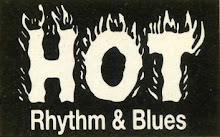
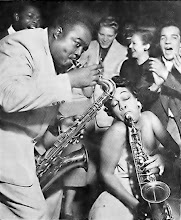





.jpg)

%2078%20-%2060663B.png)
















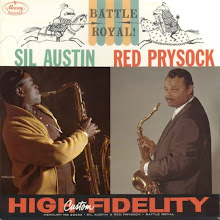
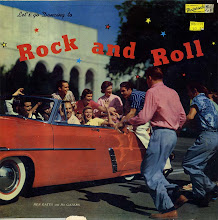
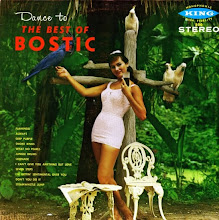
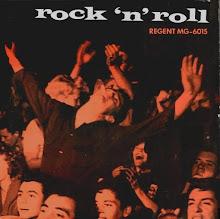
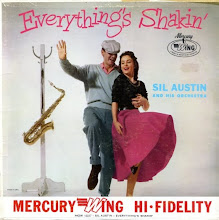








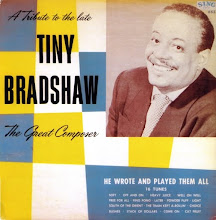





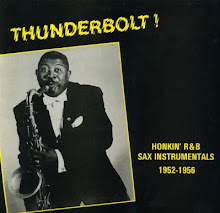

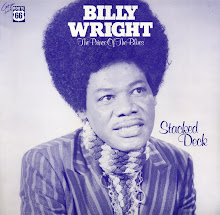






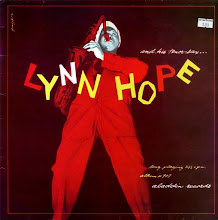



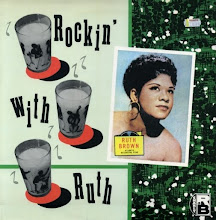


8 comments:
Congratulations- you have singlehandedly saved the music business by not offering downloads and recommending purchases!!!!!!!!!! Marky
Proud to serve, Marky. I feel so virtuous! Will there be a suitable reward from the industry I have just saved? Hmmm ...
I always recommend purchases though, gotta keep those reissue companies going so I can keep feeding my habit.
BW (addicted to R&B)
I was just thinking that Be Bop Wino is the blog I respect more than any other, and then I opened it up to this post. You've really outdone yourself. I learn so much here, hear so much great music, and find so much to admire ... The perfect combination of pleasure, scholarship, and honkin' fun. Thank you.
Very kind words, Faze, and very much appreciated. Honkin' fun comes first in my opinion!
Shagadelic!!
we're gonna rock this joint by the jackson brothers is a jam.
On the Saddlemen version of Rocket 88, Bill kept all the booze lyrics intact...And right out of the gate Rock The Joint has lyrics about smashing/busting the place up. In my opinion, which I know everyone is very interested in, Bill was not taking a "safe route". He was just making it his own. I love the Jimmy Cavallo version, but it's very close to the original, minus the honkin' horns.
In light of Danny Cedrone's electric guitar solo (later used note for note on Rock Around the Clock)how can you say that, ..."what Bill Haley and the Saddlemen were recording wasn’t particularly innovative" ???
Post a Comment